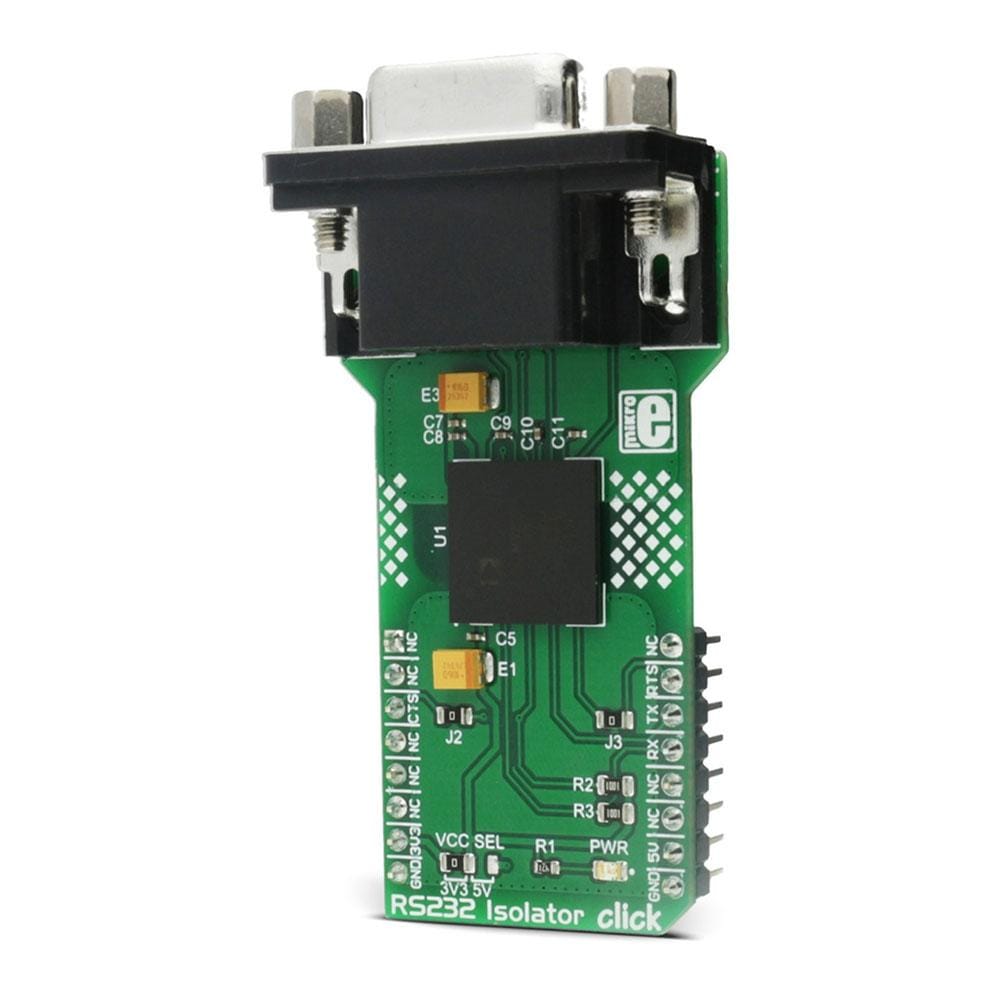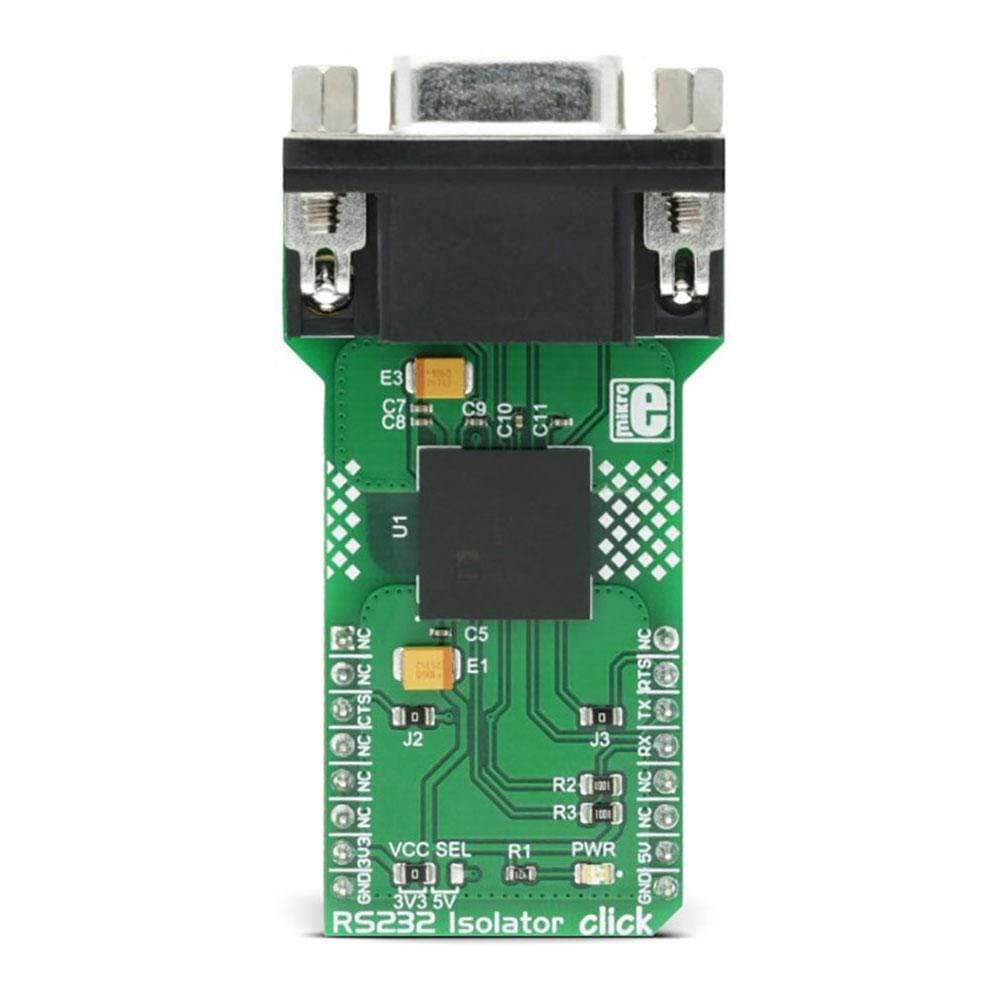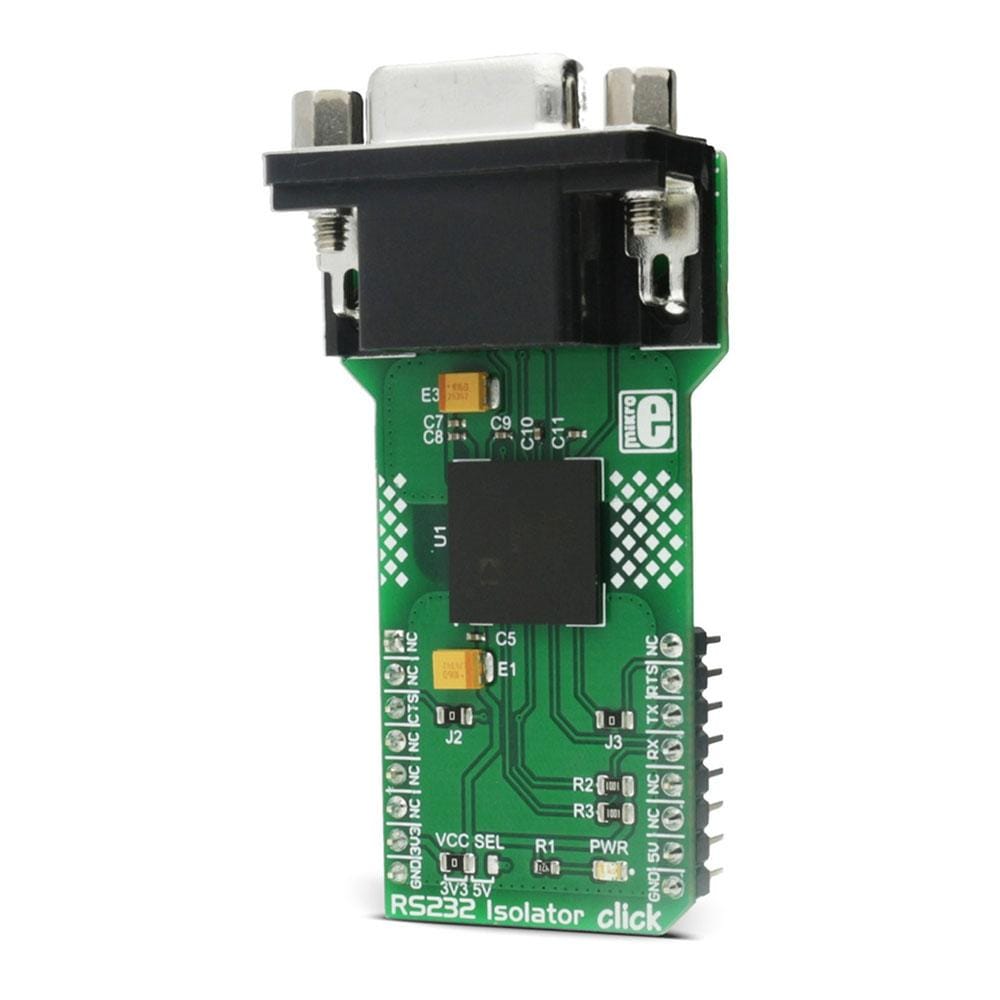
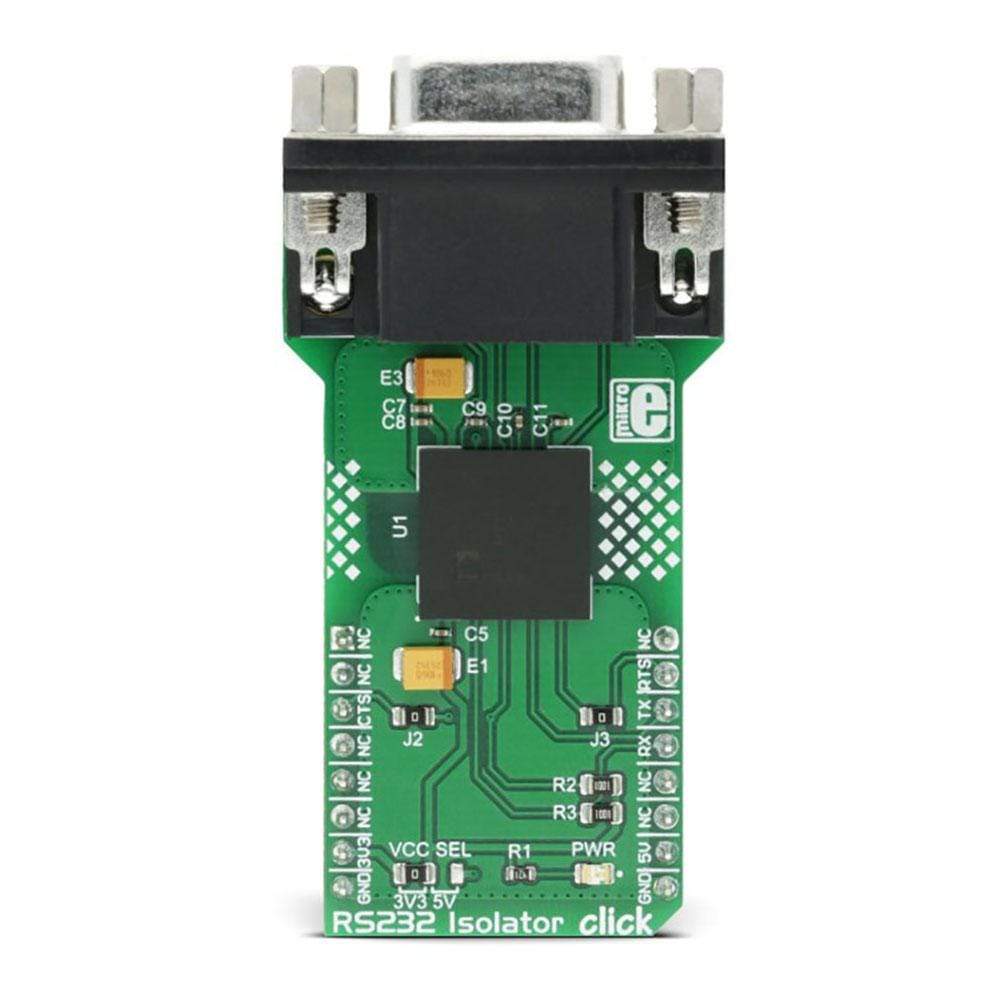
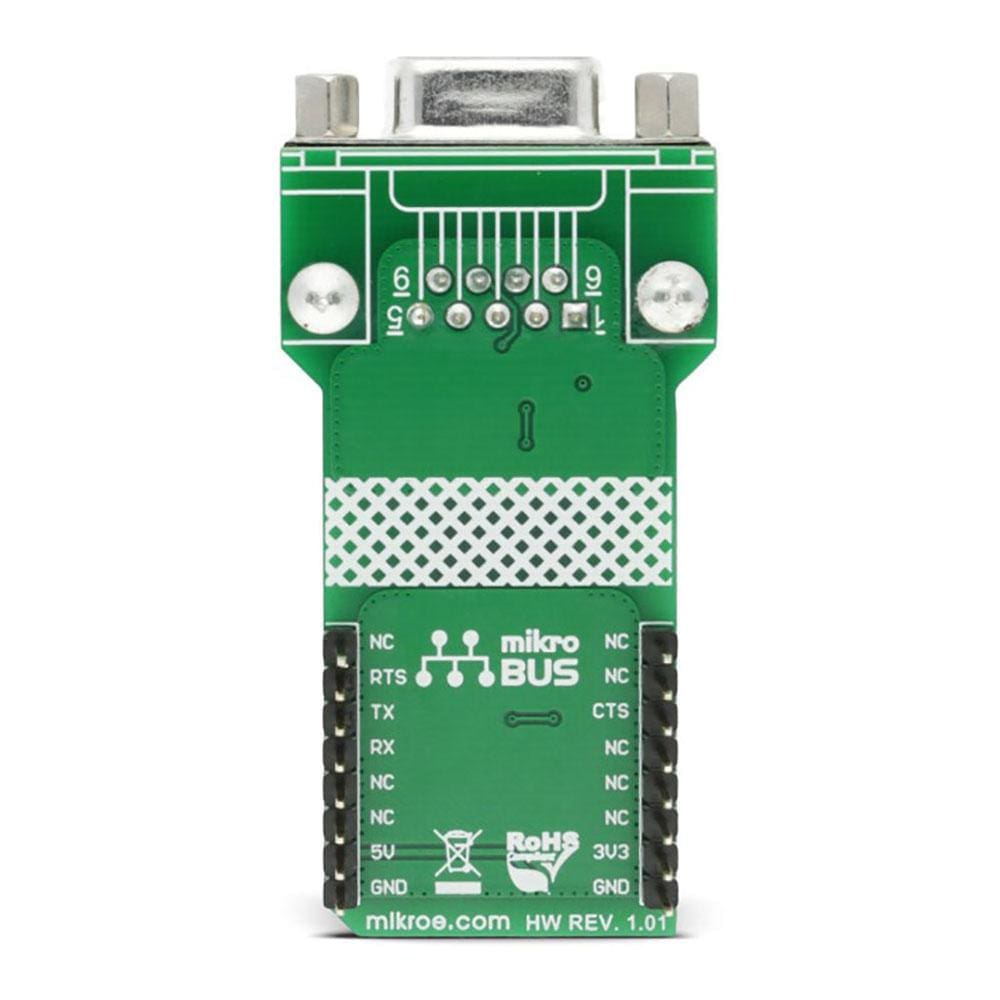
Overview
The RS232 Isolator Click Board™ is a fully isolated dual transceiver Click Board™, used to provide secure and easy UART to RS232 conversion, with the galvanic isolation. The digital input and output signals are transmitted across the isolation barrier by utilizing the Analog Devices proprietary iCoupler' technology - IC scale transformer windings couple the digital signals magnetically, from one side of the barrier to the other, providing the galvanic isolation and transfer rates up to 460Kbps.
Downloads
Das RS232 Isolator Click Board™ ist ein vollständig isoliertes Dual-Transceiver Click Board™, das für eine sichere und einfache UART-RS232-Konvertierung mit galvanischer Trennung sorgt. Die digitalen Eingangs- und Ausgangssignale werden über die Isolationsbarriere übertragen, indem die proprietäre iCoupler-Technologie von Analog Devices genutzt wird – IC-Transformatorwicklungen koppeln die digitalen Signale magnetisch von einer Seite der Barriere zur anderen und sorgen so für galvanische Trennung und Übertragungsraten von bis zu 460 Kbit/s.
| General Information | |
|---|---|
Part Number (SKU) |
MIKROE-2864
|
Manufacturer |
|
| Physical and Mechanical | |
Weight |
0.03 kg
|
| Other | |
Country of Origin |
|
HS Code Customs Tariff code
|
|
EAN |
8606018712151
|
Warranty |
|
Frequently Asked Questions
Have a Question?
Be the first to ask a question about this.

